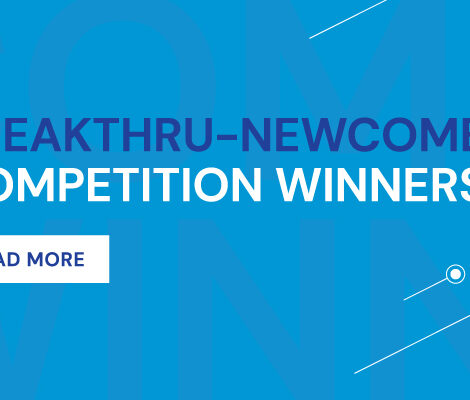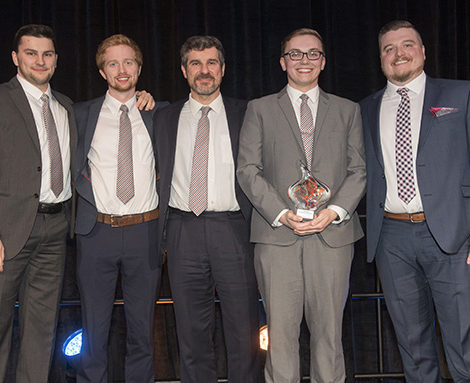- 5 juin, 2010
- Percée
- Comments : 0
Mount Allison professor tells Globe & Mail how NBIF’s Breakthru competition gets results
By Nauman Farooqi, Special to Globe and Mail | link to original article
THE CHALLENGE
The advent of the knowledge-based economy has created immense opportunities for innovative entrepreneurial ventures. An important ingredient for success is timely access to financial resources, and venture capital has typically provided support for the growth of these start-ups.
The challenge for inventors and entrepreneurs has been how to access venture capital. They are not usually business people and they don’t speak the same language as the VCs. They have the option of hiring consultants to prepare a business plan and related documentation to present their cases to the VCs, but it costs money – something they often lack.
In another life, I lived first-hand through the pressures, heartaches and rewards of the entrepreneurial process but I could not transfer this excitement to my students through traditional methods. Teaching undergraduate business students is challenging as they have little or no experience allowing them to link theory with real-world practice. The task is especially challenging in subjects related to entrepreneurship.
This challenge provided me an opportunity to create a win-win situation for both entrepreneurs and my students. By linking the two, I could provide a value-added service desperately needed by the entrepreneurs, at basically no cost to them, and at the same time provide my students with a unique learning opportunity by having them work on a “live” project. Two years ago I decided to implement this plan using an experiential learning approach for teaching a Venture Capital and Finance of Innovation course.
THE BACKGROUND
“I hear and I forget; I see and I remember; I do and I understand.” (Confucius)
Experiential learning is an innovative teaching method that allows students to learn through hands-on experience and prepares them for the real world. It is ‘learning-by-doing’ and it is based on the concept that people learn from experience. The experiential learning environment differs from a traditional classroom environment by placing students in situations that cause them to face the challenges and processes of practical life. Goal-orientation, teamwork, decision-making, observation, thinking and action-taking are the major areas developed.
Experiential learning integrates theoretical knowledge with practical acumen, as students are required to work in teams and demonstrate leadership skills. The concept was developed by David Kolb (1971). Dr. Kolb believed learning was a process where knowledge was formed through the transformation of experience.
THE RESULT
Venture Capital and Finance of Innovation is a 13-week, single semester course offered to fourth-year business students. The course was designed to provide students with an understanding of the venture capital process by leveraging the experiential learning pedagogy. The course was designed to partner with inventors and entrepreneurs and provide them with a complete package to approach the venture capitalists.
Outside the classroom this service would have conservatively cost the entrepreneurs in the range of $20,000 to $30,000 but it was provided free-of-cost as long as the entrepreneur was willing to invest the time and to fully disclose the invention or idea to the student teams.
During the winter 2009 semester, two teams of students were matched with two professors in the chemistry department at Mount Allison University. Both professors had unique inventions: one was related to an environmentally friendly process to create polymers; the other was focused on the development of novel superconducting organic polymers.
Student teams worked on developing a complete package for attracting venture capital for the two inventors. The package consisted of a business plan with detailed market analysis, financial projections, identification of possible venture capitalists to approach, and a formal presentation package and related material for making the pitch. All participants were required to execute non-disclosure agreements in order to have full access to the information regarding the relevant concept.
The course also included lectures on specialized venture financing topics, guest speakers and videos. Teams were given specific targets and milestones to achieve as they progressed through the semester. This ensured that the students experienced the high pressure and results-oriented real world business environment. Both teams participated in two competitions. A panel consisting of venture capitalists, technology transfer officers and subject specialists judged an in-house business plan competition.
The teams also participated in Breakthru – a business plan competition organized by the New Brunswick Innovation Foundation. Both teams made it to the second stage, with one progressing to the final and winning the top prize of $125,000 for one of the inventors.
The students’ response to this experience was very positive. Based on the course feedback, the students agreed that they were able to make the link between theory and practice and learned valuable lessons that could only have been accomplished by the hands-on experiential learning approach. The course allowed them to take business theory taught in a classroom and apply it to the real world. The students appreciated the level of autonomy given to them by the instructor. Finally, the students learned the importance of being completely committed to a project.
The feedback received from the entrepreneurs was very positive as well. They were impressed by the level of professionalism and dedication exhibited by the student teams and appreciated the resulting package developed for their inventions and ideas.
By having access to business students they were able to benefit from their expertise and in one case raise $125,000 for their venture. The takeaway from this experiment is that entrepreneurs with ideas or inventions can harness the resources available at business programs across Canada. This allows for a win-win situation as the entrepreneur gets access to business help while students benefit from the real-world experience. This links theory and business on more than one level.
Special to The Globe and Mail
Nauman Farooqi is an associate professor and chair of the Research Ethics Board in the Ron Joyce Centre for Business Studies of Mount Allison University.

